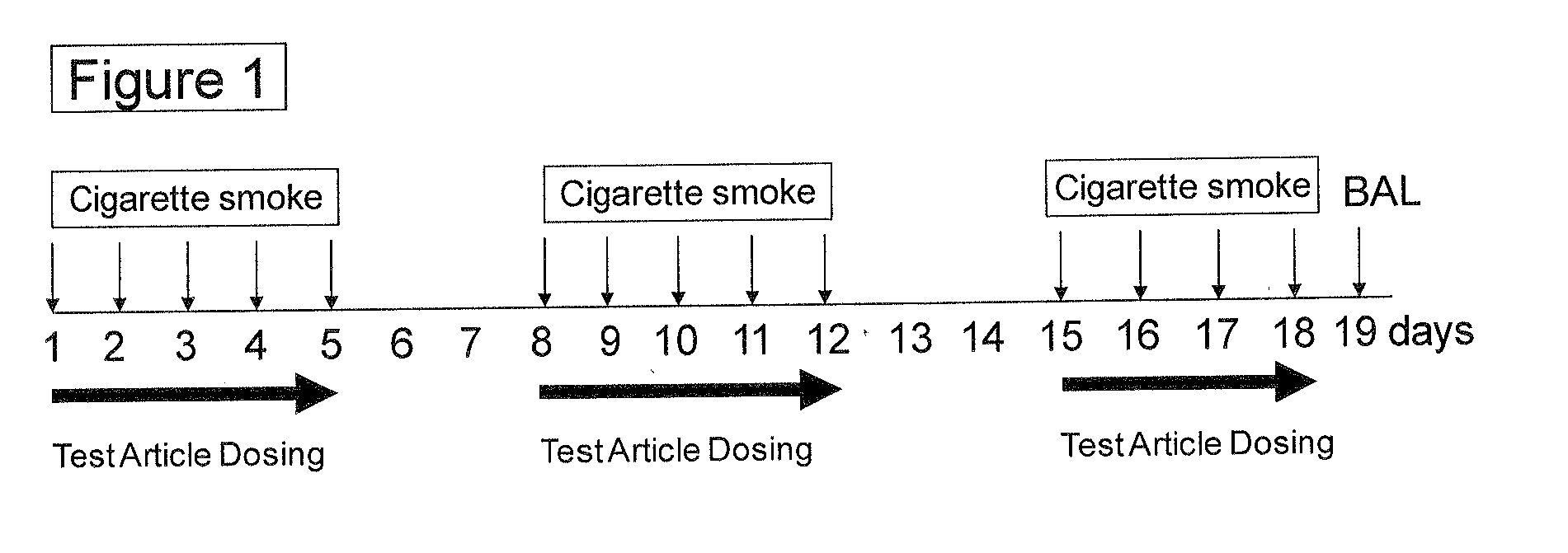Methods and compositions for disease treatment using inhalation
a technology of inhalation and composition, applied in the field of pulmonary diseases, to achieve the effect of increasing the anti-inflammatory response, improving the treatment compliance, and increasing the convenience of the subj
- Summary
- Abstract
- Description
- Claims
- Application Information
AI Technical Summary
Benefits of technology
Problems solved by technology
Method used
Image
Examples
example 1
Controlled Site Delivery of Corticosteroid and Corticosteroid Resistant Agents via Inhalation
[0116]Inhaled corticosteroids (ICS) mometasone furoate or fluticasone furoate are prepared with volume median particle size of less than 5 microns. Calcitriol (1, 25-Dihydroxycholecalciferol) is also prepared in crystalline form and subsequently micronized to a volume median particle size of less than 5 microns. The ICS's are incorporated at appropriately 30-50% of the commercial ICS dose when administered via a passive dry powder inhaler, due to the efficiency of the invention delivered by a dry powder inhaler (DPI) available from MicroDose Therapeutx, Inc. One preferred embodiment utilizes an ICS dosed once daily, i.e. mometasone furoate or fluticasone furoate, to coincide with a once daily dose of the vitamin D receptor agonist. This combination product is designed to reverse corticoidsteroid resistance (CR) by adding the protective anti-inflammatory effects of calcitriol with the local a...
example 2
Controlled Site Delivery of Corticosteroid and Corticosteroid Resistant Agents via Inhalation
[0117]The ICS of Example 1, in crystalline form, are micronized to a maximum particle size of about 5 microns. A dry powder unit dose containing clinically effective doses of either ICS is blended with 1000 micrograms lecithin and packaged for delivery in a dry powder inhaler (DPI) available from MicroDose Therapeutx, Inc. This combination is designed to spread into alveolar fluid and treat lung parenchyma through partially occluded small airways.
example 3
Controlled Site Delivery of Corticosteroid and Corticosteroid Resistant Agents via Inhalation
[0118]The ICS formulation from Example 1 or 2 is combined with albuterol sulfate in crystalline form separately micronized to a maximum particle size of about 5 microns. Delivery from a multiple dose dry powder inhaler (DPI) available from MicroDose Therapeutx, Inc. (Monmouth, N.J.) leverages the short acting bronchodilation of albuterol to allow deeper penetration of the ICS into the lung parenchyma.
PUM
| Property | Measurement | Unit |
|---|---|---|
| Dimensionless property | aaaaa | aaaaa |
Abstract
Description
Claims
Application Information
 Login to View More
Login to View More - R&D
- Intellectual Property
- Life Sciences
- Materials
- Tech Scout
- Unparalleled Data Quality
- Higher Quality Content
- 60% Fewer Hallucinations
Browse by: Latest US Patents, China's latest patents, Technical Efficacy Thesaurus, Application Domain, Technology Topic, Popular Technical Reports.
© 2025 PatSnap. All rights reserved.Legal|Privacy policy|Modern Slavery Act Transparency Statement|Sitemap|About US| Contact US: help@patsnap.com



